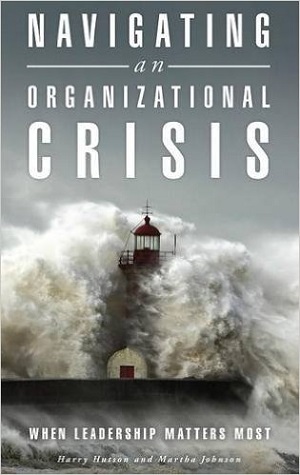How organizations manage crisis and what’s business got to do with it
In their book, Navigating an Organizational Crisis: When Leadership Matters Most, writers Harry Hutson and Martha Johnson, draw from real life examples such as the Oklahoma City bombing, Hurricane Katrina, and the 2008 financial crisis, to offer surprising insight into what it takes to be an effective leader in a time of disaster.
Their answer: storytelling.
In business, crisis management typically revolves around developing a thorough, well thought out plan that provides step-by-step directions on how to re-establish business continuity in any given number of crisis scenarios. The emphasis is generally placed on logistical aspects of managing a crisis, and while Hutson and Johnson certainly do not deny the value of operations planning, they also argue that there is a need for something more. In their recent Harvard Business Review article, they write:
“In chaos or calamity, the greatest loss an organization can experience is the loss of meaning. When meaning is disrupted, we feel unsafe, out of control, baffled, or dazed. Without meaning, we don’t trust our ability to understand what is going on or to imagine what could happen next. We need coherence. We need a story.”
One example they give is that of Courtney Watson, executive director of the B&O Railroad Museum in Baltimore, MD. A Smithsonian affiliate, this museum is considered a historic national landmark allowing over 250,000 visitors every year to see, touch, hear and explore the most important railroad collection in America. When the museum’s finest collection of artifacts was damaged by a roof collapse, caused by the 2014 blizzard, the museum’s director, employees, and the global railroad fan community were devastated.
Watson’s response to this crisis involved an operationally sound plan that deployed three cross-functional teams to tackle a range of logistical, admin, safety, and damage control issues. However, Wilson’s response also managed the emotional aspect of the crisis — the way it personally affected the institution’s constituents.
In describing Watson, Hudson and Johnson write, “He conveyed emotional truth. As every effective storyteller does, he described what happened and projected what would follow while including himself in the drama. Wilson displayed feelings that substantiated his commitment to the larger purpose of the museum and inspired the people who would put it back together.”
At William Woods, bachelor of business students can learn more about preventing a business-related crisis in BMT423 Managerial Risk Management. This course teaches students how to examine and assess personal and business risk through various methods. This assessment process integrates an understanding of the fundamental concepts of social, private and public insurance programs. Upon completion of this course, the undergraduate business degree students will be better able to distinguish between the many options available to protect the business owner, employee, and commercial firms.


